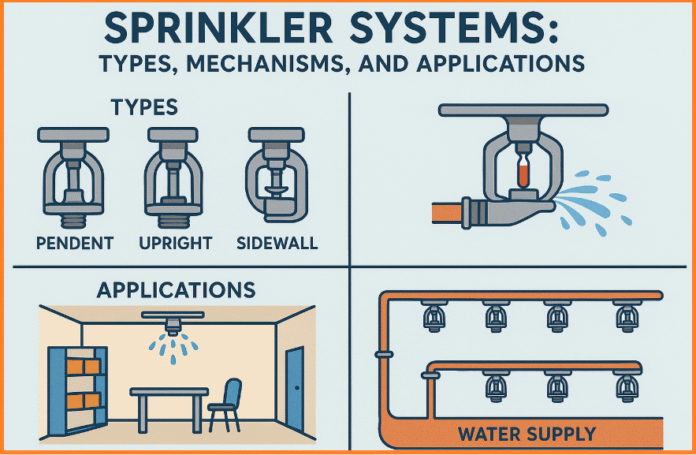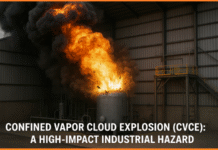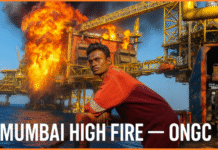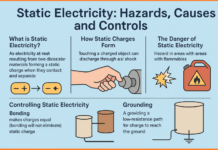Sprinkler systems play a major role in fire protection strategies across residential, commercial, and industrial buildings. Designed to detect and respond to fires rapidly, these systems vary based on their operational mechanisms and are chosen based on the specific environmental needs of the building. Here, we break down the four primary types of sprinkler systems: Dry Pipe, Wet Pipe, Deluge, and Pre-Action, along with their unique features, advantages, and disadvantages.
Contents
1. Dry Pipe Sprinkler System
A Dry Pipe System is designed for environments where the risk of freezing is high. In this system, the pipes are not filled with water; instead, they are filled with pressurized air or nitrogen. The water is held back at a control valve located in a heated area.
How It Works:
- Each sprinkler head has a fusible link that melts at a specific temperature.
- When fire causes the temperature to rise and the fusible link breaks, air pressure drops in the system.
- This pressure drop causes the valve to open, allowing water to rush into the pipe network and discharge through the open sprinkler head.
Advantages:
- Suitable for cold and freezing areas.
- Can serve as a standby system, reducing the risk of water leakage when not activated.
Disadvantages:
- Delayed response time compared to wet systems due to the need to expel air before water is discharged.
2. Wet Pipe Sprinkler System
The Wet Pipe System is the most common and straightforward type. In this system, the pipes are constantly filled with water under pressure, ready to release water immediately upon sprinkler activation.
How It Works:
- Sprinkler heads are equipped with heat-sensitive elements.
- When the ambient temperature reaches a certain threshold, the element activates and water is instantly discharged from the sprinkler.
Advantages:
- Fastest response time among all types.
- Simple design with low maintenance requirements.
Disadvantages:
- Not suitable for freezing conditions.
- Risks include corrosion, water leakage, and stagnation, which can compromise system effectiveness.
3. Deluge Sprinkler System
Deluge Systems are designed for high-hazard areas where rapid fire spread is a concern, such as chemical plants or aircraft hangars. These systems feature open sprinkler heads, and no water is present in the piping until the system is activated.
How It Works:
- Upon fire detection (via an external alarm system), a deluge valve opens.
- Water or another extinguishing agent is released and flows through all sprinkler heads simultaneously.
Advantages:
- Provides a quick and extensive response to rapidly developing fires.
- Ideal for locations with high fire risks.
Disadvantages:
- Requires regular maintenance.
- Uses a large volume of extinguishing agent, which can lead to water damage.
- Higher installation and operating costs.
4. Pre-Action Sprinkler System
The Pre-Action System combines elements of both dry and wet systems. Water is not present in the pipes until a separate detection system activates the supply valve.
How It Works:
- Initially, the pipes are dry (like a dry pipe system).
- Upon detection of fire by an external system (e.g., smoke or heat detectors), the pre-action valve opens, filling the pipes with water.
- Water is only discharged when a sprinkler head is activated by heat.
Advantages:
- Suitable for sensitive environments (e.g., data centers, museums) where accidental discharge must be avoided.
- Offers dual verification (detection and sprinkler activation) before water is released.
Disadvantages:
- More complex and costly to install and maintain than other systems.
- Slight delay in activation compared to wet pipe systems.
Sprinkler Head Color Codes
Sprinkler heads are color-coded based on the temperature rating of the thermal element (typically a glass bulb). This helps identify the activation temperature at a glance:
| Color | Activation Temperature (°C) | Application |
|---|---|---|
| Orange | 57°C (135°F) | Low-temperature areas |
| Red | 68°C (155°F) | Ordinary temperature environments |
| Yellow | 79°C (175°F) | Slightly higher ambient temperatures |
| Green | 93°C (200°F) | High-temperature industrial zones |
| Blue | 141°C (286°F) | Extra high-temperature environments |
| Purple | 182°C (360°F) | Special applications |
| Black | 204°C (400°F) and above | Very high heat areas |
Choosing the right sprinkler system depends on the specific risks, environmental conditions, and building requirements. While wet systems are ideal for fast response in warm climates, dry and pre-action systems provide protection in colder or sensitive areas. Deluge systems, meanwhile, offer maximum coverage in high-risk fire zones. Understanding these systems and their capabilities ensures better fire protection planning and can significantly reduce damage and enhance safety during emergencies.





